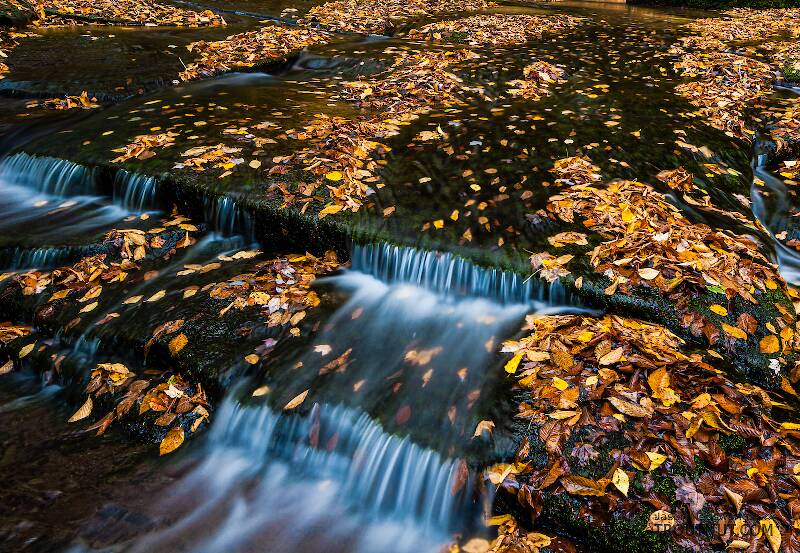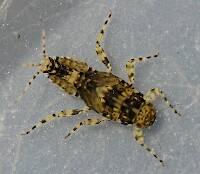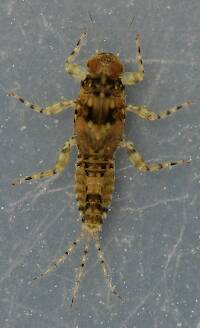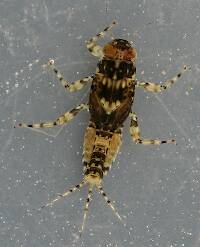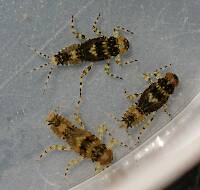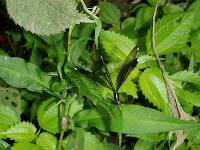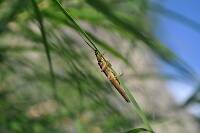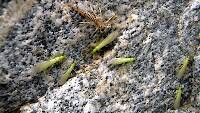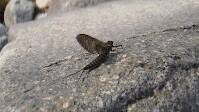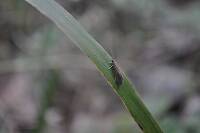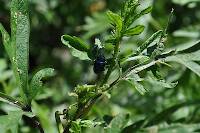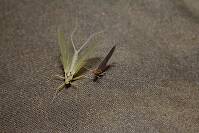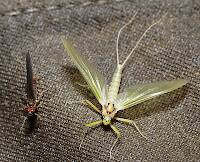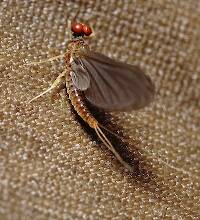
Hex Mayflies
Hexagenia limbata
The famous nocturnal Hex hatch of the Midwest (and a few other lucky locations) stirs to the surface mythically large brown trout that only touch streamers for the rest of the year.
Featured on the forum

As far as I can tell, this species has only previously been reported from one site in Oregon along the Columbia gorge. However, the key characteristics are fairly unmistakable in all except for one minor detail:
— 4 small yellow spots on frons visible in photos
— Narrow occipital spinule row curves forward (but doesn’t quite meet on stem of ecdysial suture, as it's supposed to in this species)
— Short spinules on anterior margin of front legs
— Short rposterior row of blunt spinules on abdominal tergae, rather than elongated spinules dorsally
I caught several of these mature nymphs in the fishless, tiny headwaters of a creek high in the Wenatchee Mountains.
— 4 small yellow spots on frons visible in photos
— Narrow occipital spinule row curves forward (but doesn’t quite meet on stem of ecdysial suture, as it's supposed to in this species)
— Short spinules on anterior margin of front legs
— Short rposterior row of blunt spinules on abdominal tergae, rather than elongated spinules dorsally
I caught several of these mature nymphs in the fishless, tiny headwaters of a creek high in the Wenatchee Mountains.

Troutnut is a project started in 2003 by salmonid ecologist Jason "Troutnut" Neuswanger to help anglers and
fly tyers unabashedly embrace the entomological side of the sport. Learn more about Troutnut or
support the project for an enhanced experience here.
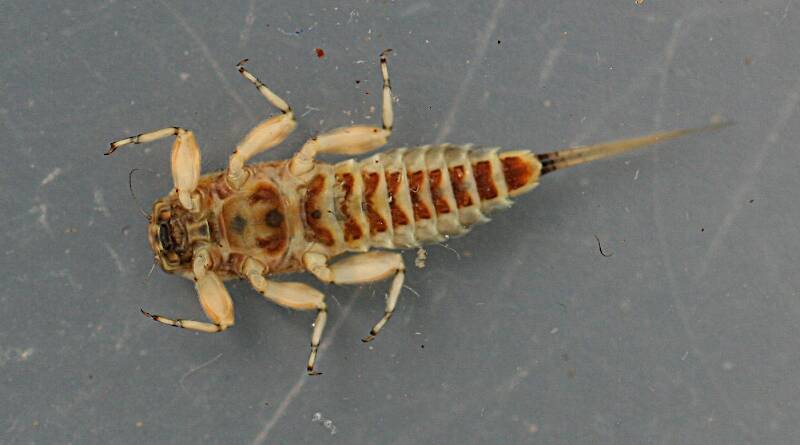
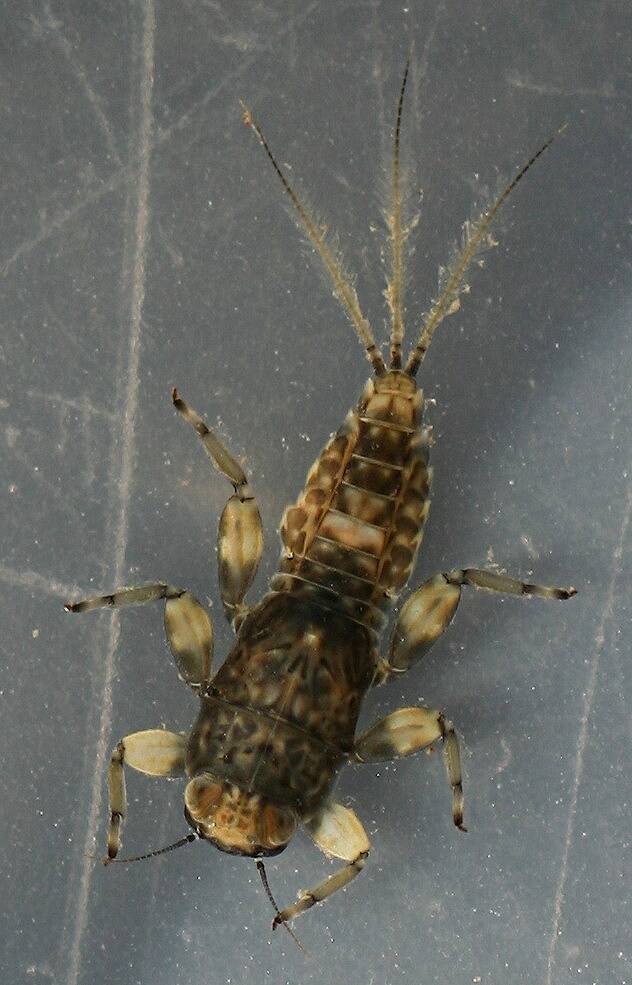
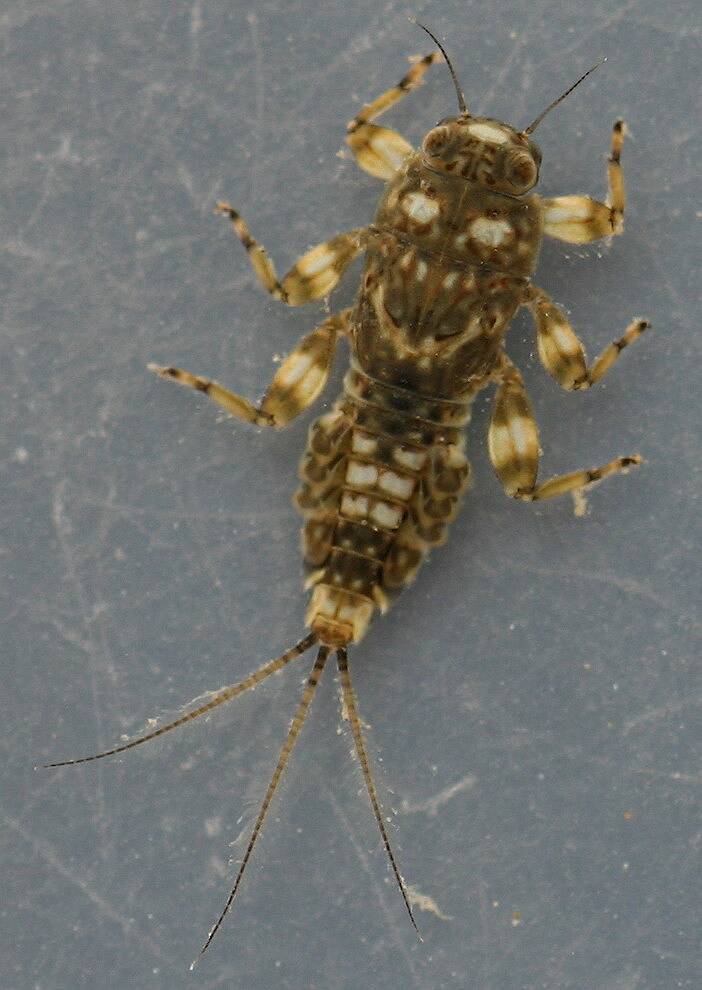
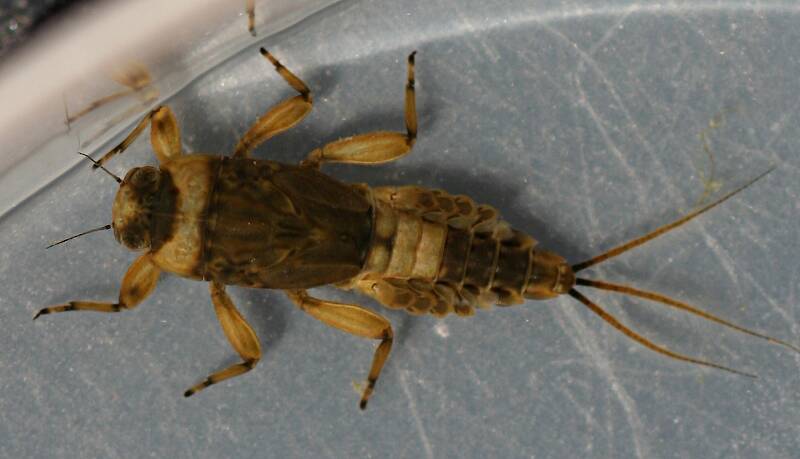

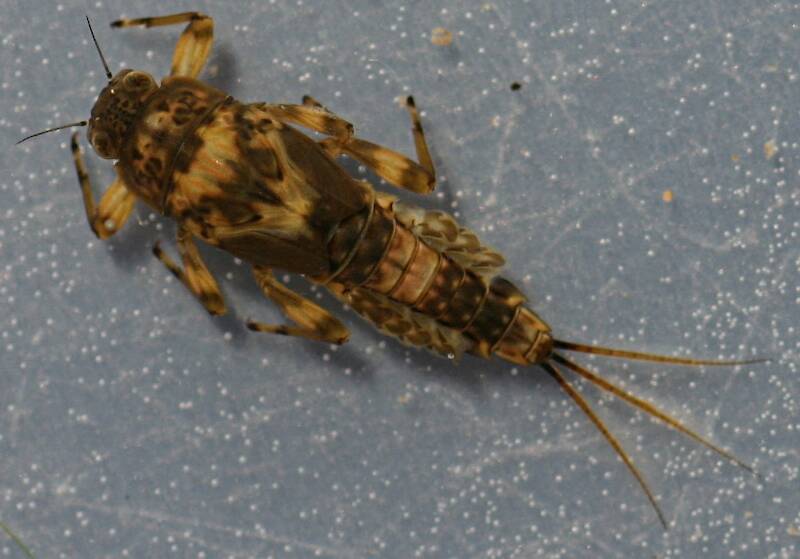
Millcreek on Apr 10, 2015April 10th, 2015, 7:22 am EDT
Common in the Russian River. Usually found in small gravel, in shallow water. The nymphs were keyed out to family using Merritt, Cummins and Berg (2008) and to species using Allen and Edmunds "A Revision of the Genus Ephemerella (Ephemeroptera; Ephemerellidae) VII. The Subgenus Ephemerella in North America".
http://www.ephemeroptera-galactica.com/pubs/pub_a/puballenr1965p244.pdf
These nymphs show considerable variation in coloring but maintain the same body shape and typical coloring of the sternites.
http://www.ephemeroptera-galactica.com/pubs/pub_a/puballenr1965p244.pdf
These nymphs show considerable variation in coloring but maintain the same body shape and typical coloring of the sternites.
"If we knew what it was we were doing, it would not be called research, would it?"
-Albert Einstein
-Albert Einstein
Troutnut on Apr 11, 2015April 11th, 2015, 11:12 am EDT
Excellent photos!
Jason Neuswanger, Ph.D.
Troutnut and salmonid ecologist
Troutnut and salmonid ecologist
Millcreek on Apr 12, 2015April 12th, 2015, 6:26 am EDT
Thanks, glad you enjoyed them.
"If we knew what it was we were doing, it would not be called research, would it?"
-Albert Einstein
-Albert Einstein
PaulRoberts on Apr 12, 2015April 12th, 2015, 5:38 pm EDT
Gorgeous critter.
Quick Reply
Related Discussions
Topic
Replies
Last Reply
10
May 24, 2009
by Wiflyfisher
by Wiflyfisher
17
Jun 2, 2008
by Woodster
by Woodster
5
Dec 18, 2013
by Brookyman
by Brookyman
1
May 5, 2009
by GONZO
by GONZO
0
Jul 10, 2006
by Troutnut
by Troutnut
12
Feb 18, 2008
by Boerie
by Boerie

